13 best fitness trackers & monitors to buy in 2025
If health and fitness is your priority for 2025, a fitness tracker could really help you reach your goals this year.
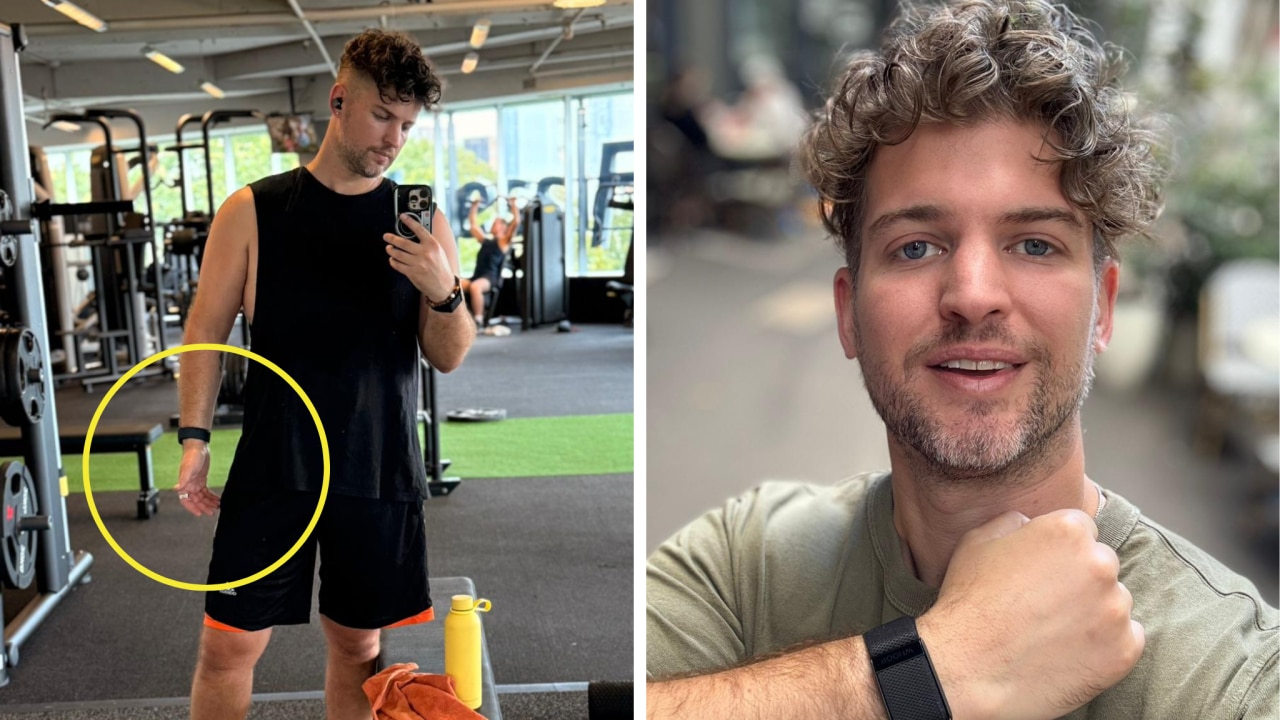
We may receive payments from third parties for sharing this content, and when you purchase through links in this article. Product prices and offer details are not assured, and should be confirmed independently with the retailer. Learn more
I don’t know about you, but 2025 is off and racing, and the one thing I don’t want to leave behind this year is my health and fitness.
And thankfully, with the help of a solid fitness tracker, I don’t have to go it alone to reach my health and fitness goals, whether it be hitting my 10,000 steps a day or my optimal heart rate on the treadmill or cross-trainer.
From the Whoop and Samsung Galaxy Ring to the Garmin Watch, today’s fitness trackers offer personalised workout programs and recovery tips, all while tracking stress levels, sleep quality, menstrual cycle, and vital health metrics like resting heart rate and blood oxygen levels.
It's clear that fitness trackers are no longer just for fitness enthusiasts. Athletes, celebrities, and even Prince William are tapping into their benefits. The future King was spotted wearing a Whoop device in Dusseldorf at a 2024 football match between England and Switzerland.
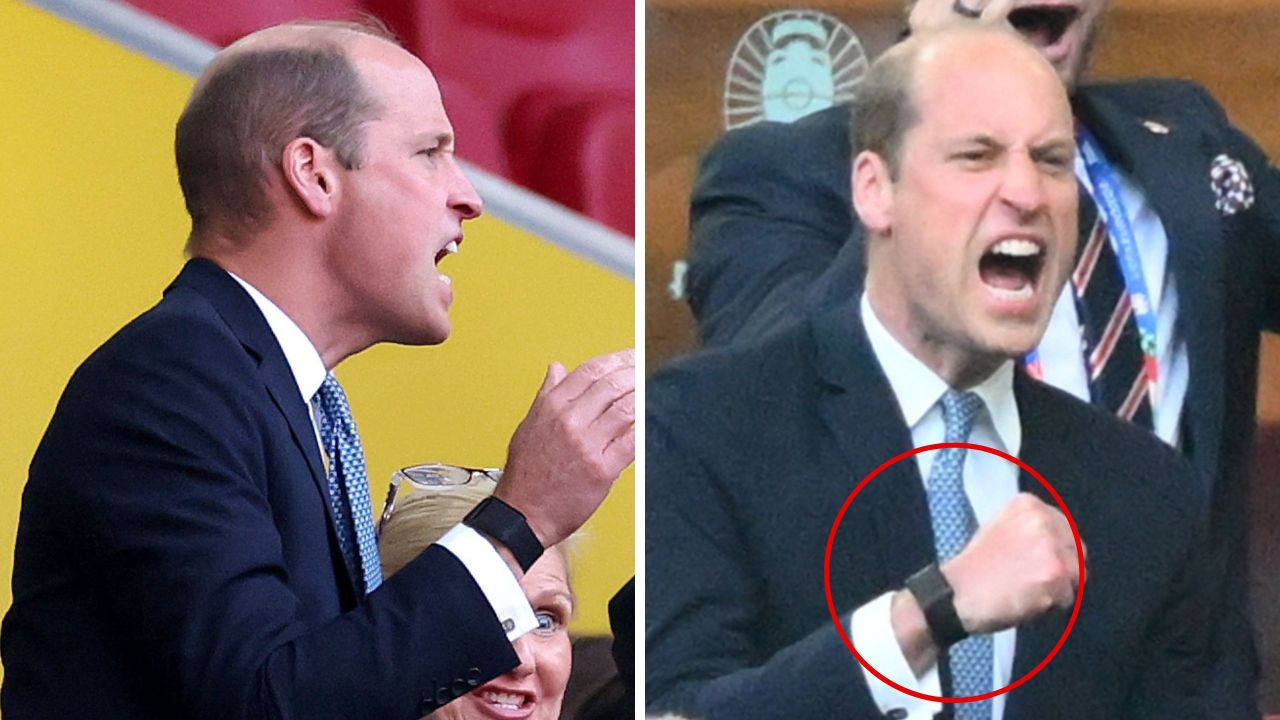
His brother Prince Harry was also seen wearing an Oura ring on his 2018 official tour of Australia.
More than just gadgets, these trackers act like personal health coaches, offering motivation, daily activity insights, and visual progress tracking. And it's not just physical health they support—many fitness trackers also focus on mental and emotional wellbeing.
RELATED: Top running shoes for men
Whether you’re a running enthusiast, or simply want to increase your daily activity levels, we've rounded up our pick of the best fitness trackers on the market - including our Editor's pick of the "impressive" Whoop 4.0. Read on for an honest review of all its features and benefits.
Also worth your attention is the Garmin Forerunner 265, and the "stylish" Fitbit Sense 2, which reviewers have called the "best Fitbit watch I've had".
OUR TOP PICKS - BEST FITNESS TRACKERS
EDITOR'S PICKS OF THE BEST FITNESS TRACKERS
Whoop 4.0, $379 at Amazon Australia
What You Need To Know
You’ve likely heard of Whoop thanks to the likes of Michael Phelps and LeBron James who have long championed the fitness trackers’ benefits.
Even Prince William has been recently spotted wearing the device.
But while the Whoop 4.0 delivers a range of features including five LEDs, four photodiodes, and a body temperature sensor for more accurate recovery metrics, for the average user all this can feel overwhelming.
Unlike most fitness trackers, Whoop isn’t concerned about step count and cares only for cardiovascular strain, recovery and sleep. Not surprisingly, if you’re not someone who does a lot of cardio as their main source of activity, you’re not going to find this particularly useful.
Where Whoop does shine is in its recovery tracking and the app is data-rich when it comes to providing insight into daily strain. Even so, this is mostly going to benefit top-performing athletes who can avoid over-training by dialling back on the intensity on those days where recovery was negligible.
Tried and Tested by Troy Nankervis, news.com.au checkout Shopping Writer
I’ve been wearing the Whoop 4.0 for a few months now and I’m a big fan of its features, which have dramatically changed my approach to my health and fitness.
Essentially, the Whoop is keeping me honest, with its metrics providing some great insights, as well as a benchmark each day for my sleep performance and how hard I can train.
And the good news is that the longer you wear the tracker, the more data and insights you unlock, which you can then apply in real time. It’s epic and impressive. It takes just under a week to fully calibrate the device to your body, but once that’s done, you have a really powerful motivator, which is all personalised to your body’s performance capabilities.

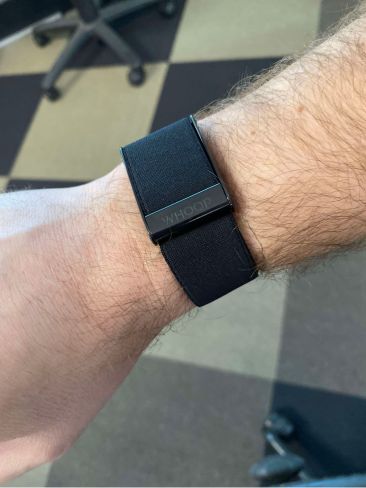
Each morning you’re given a score on your sleep quality, your recovery efforts and your recommended stain (or how much output you should be aiming for).
During workouts, you can also measure your heart rate and calories burned, which I’ve been doing at the gym and while cycling to and from work. It keeps you very accountable and I’ve found this very motivating.
I was feeling a little run down a few weeks ago and ended up catching a cold, which knocked me out for a few days.
Surprisingly, the Whoop detected my sleep quality and general wellbeing was interrupted because of this, and recommended rest over training, unprompted. As someone who normally pushes myself to go the extra mile, it was helpful to see in real time a moment where to take things down a gear.
There is real time health monitoring on your breathing (respiratory rate), your blood oxygen levels, your resting heart rate and skin temperature. Each morning you’re also asked to log the amount of caffeine, water and protein consumed for the day before, and you can also track naps and recovery activities like yoga and breathwork too - all of which helps to paint a very clear picture of your overall well being.
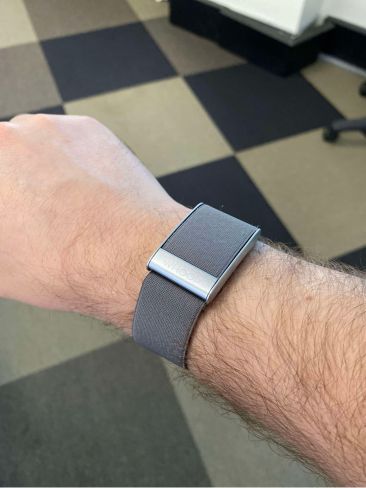
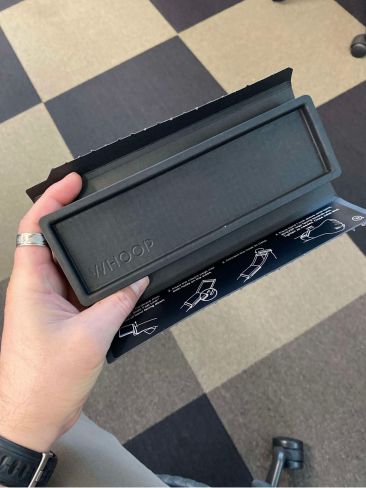
The straps on the Whoop are interchangeable (you have to purchase these separately) and you’re meant to be wearing the device 24/7. I thought this might be a little weird wearing it while sleeping, and also in the shower or swimming, but I’m pretty used to it now and don’t actually notice.
I’m wearing it around my wrist, but some people also choose to move it up to their upper bicep.
There’s a wide range of colours for the band too, I’ve been alternating between the grey and black colours - personally I think black is always going to be a winner and looks more discreet, but if you want it to “pop” a little there’s some great hues in blue, green and yellow too.
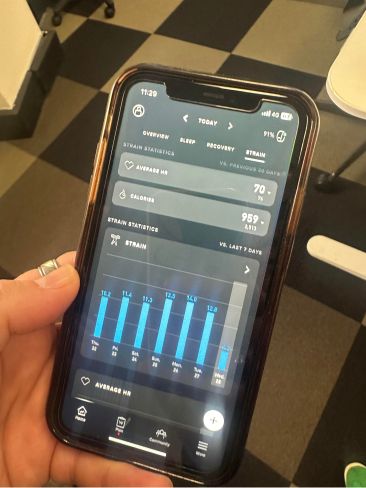
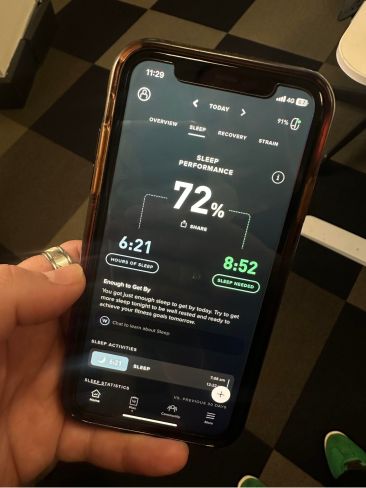
If, like me, you are looking for something to help restart your fitness, I have no hesitation recommending the Whoop 4.0.
This is definitely worth your attention, and to be honest, I am reluctant to stop using it. It's really helped improve my overall health and fitness in a very holistic and practical way.
Garmin Forerunner 265, $700.43 at Amazon Australia
Tried and Tested by Jess Campbell, news.com.au checkout Technology Contributor
The Garmin Forerunner 255 may boast many of the same features that have made the brand a standout – pulse oximetry, hydration, sleep tracking, Morning Report, and daily suggested workouts to name a few – but there are significant updates that make the 265 a worthwhile upgrade.
Most notably, the all-new AMOLED screen makes colours pop with vibrancy in a display that’s easily readable in all conditions, including direct sunlight. Using the same technology as the Apple Watch and Samsung Galaxy Watch Series, it’s a true marvel that Garmin have achieved this without compromising battery life. Though you won’t get the seemingly endless battery life of the Garmin Instinct 2X Solar, up to 15 days usage far surpasses the likes of Apple and the Google Pixel Watch 2.
Another exciting development is that of the Training Readiness score, which is also available on the Garmin Forerunner 955. Consider this an update to the Body Battery score, as it takes in a range of data including sleep history, recent sleep quality, recovery time, HRV status, acute training load, and stress history. Using this information, it gives you a readiness score for your next training session which is a valuable tool if you need help avoiding overtraining as you focus more on recovery.
When paired with a smartphone, you’ll be able to receive notifications for apps, texts, calls, and view calendar events however, only Android users will be able to reply to texts or calls (sadly, Apple only allows reply functionality for Apple Watches). These smartwatch benefits are seamlessly integrated into a sports-oriented fitness tracker that runners will surely love. Plus, the larger ‘Run’ button – like that of the Apple Watch Ultra’s ‘Action Button’ - that protrudes from the case makes it easy to record your training reps and races. With a comfortable design and lightweight feel, it’s the ultimate running companion.
Samsung Galaxy Watch 6, $549 at Amazon Australia
What You Need To Know
The first thing you’ll notice about the Samsung Galaxy Watch 6 is its increased display, making for a striking smartwatch that’s loaded with features to improve your health and fitness. All the health features you’d expect of a top fitness tracker are present, from performance insights across a range of sports-oriented activities and workouts (you can manually track over 90 additional exercises, too) to stress monitoring, cycling tracking, and blood oxygen tracking.
The two major developments are that of Advanced Sleep Coaching and Personalised Heart Rate Zones. As well as tracking sleep quality, you can customise a sleep program which will assign you a “sleep animal” to then guide you through various checklists, guided meditations, and information to help improve your sleep habits.
For those wanting an extra push in their workouts, personalised heart rate zones can help you target your preferred intensity for any activity and avoid the risk of overtraining.
Still, it’s Samsung’s Body Composition feature that continues to garner the most attention – and for good reason. With an embedded BIA (Bioelectrical Independence Analysis) sensor, it measures skeletal muscle, fat mass, body fat percentage, Body Mass Index (BMI) and Basal Metabolic Rate (BMR) for the most comprehensive analysis of your health that you can get on your wrist.
And with third-party apps that can be easily installed, this fitness tracker is one that seamlessly integrates fitness with functionality, so you can leave your phone at home and let your watch do all the work.
BEST SMARTWATCH FITNESS TRACKER
Fitbit Sense 2, $362.64 (down from $413.76) at Amazon Australia
What You Need To Know
Equipped with all the features you’d expect such as heart rate, skin temperature, sleep quality, and Active Zone Minutes for those who want a more targeted approach for fat burning, cardio, or peak heart-rate zone training, this fitness tracker is a great option for recreational and more seasoned runners alike.
New upgrades include the ECG and EDA sensor, the latter of which continuously tracks your body’s stress throughout the day as you respond to various situations. If high stress is detected, you’ll receive prompts to check in with your mental health with some guided meditation or breathwork.
And with the Daily Readiness Score that’s available to Fitbit Premium members, you’ll get a breakdown of your sleep, activity, and HRV so you can tailor your training around your recovery and training load.
The Fitbit Sense 2 may not have the battery life of a Garmin, but this fitness tracker delivers more than enough data to improve your running and overall well-being.
BEST APPLE WATCH
Apple Watch Ultra 2, $1264.71 (down from $1399) at Amazon Australia
What You Need To Know
While Android users won’t get to experience the benefits of the Apple Watch Ultra 2, those with an iPhone will enjoy the fast connectivity features of this smartwatch. With a faster S9 chip, larger display, longer battery life, and improved water resistance, there are significant upgrades to Apple’s latest Ultra watch. However, it’s the Apple Health app extending across the Ultra Watch and Watch Series where the company particularly shines.
You can expect detailed tracking of your exercise, sleep, daily heart rate, advanced running metrics, ECG, blood oxygen, and temperature for advanced cycle tracking. The Workout app provides detailed metrics across a range of sporting profiles and can automatically recognise when you switch between activities in multisport events like a triathlon. Apple even has a feature that allows you to log your state of mind and medications, promoting a holistic view of health that goes far beyond the physical.
Safe to say, where the Coros Pace 3 presents a more basic approach to health and fitness tracking, the Apple Watch Ultra 2 intends to do it all. The caveat? It can all feel a bit overwhelming and for those who aren’t too well-versed in the tech world, navigating these features on the interface of the Ultra 2 can prove challenging.
BEST BUDGET FITNESS TRACKERS
Fitbit Inspire 3, $152.15 (down from $179) at Myer
What You Need To Know
The Fitbit Inspire 3 boasts substantial upgrades, most notably that of a colour screen. In the Fitbit app, you’ll see your data displayed in an accessible manner and while a Premium subscription will unlock further stats (heart rate variability, skin temperature, and oxygen saturation aren’t shown in full history), the basics of heart rate, steps, stress management, sleep quality, mindfulness, hydration, and calories burned are all there.
Where the Fitbit Inspire 3 falls short is its touchscreen display which can be tricky to navigate with sweaty fingers. In terms of workout tracking, this too is quite basic with heart rate, Active Zone minutes, distance, pace, and time recorded and 21 different sport modes to choose from.
You won’t get the technological prowess or performance metrics that a Garmin, Apple or Samsung Galaxy Watch will afford, but you do get key health metrics at an affordable price that come packaged in a sleek, comfortable design. In fact, for those looking to track sleep quality, the Fitbit Inspire 3 is probably the most comfortable to wear for an undisturbed sleep.
Samsung Galaxy Fit 3, $129.99 at Amazon Australia
Tried and Tested by Tahnee-Jae Lopez-Vito, news.com.au checkout Senior Shopping Writer
I absolutely love Samsung’s Galaxy Fit3 as a ‘barely there’ accessory. It doesn’t get in the way and feels so comfortable and lightweight that I have forgotten it was on a few times.
The usual flappy tail bit of the band is also secured really well, which is a small detail I’m a major fan of. Plus, the display itself is very bright and large yet slim, making it easy to see all the menu options without a lot of bulk. The touch controls are also very responsive, including the ‘Lift to Wake’ function.
If you haven’t used a fitness tracker before, the Galaxy Fit 3 has a pretty easy learning curve and the ‘tour’ does a decent job at taking you through everything. It also makes it easy to access all your Samsung Health stats and has a camera remote function for when you want to take a post-hike selfie.
For emergencies, the watch has fall detection and an option to send an SOS message to your emergency contacts. Your pre-registered Medical info (e.g. allergies, current medical conditions and medications) will appear on the lock screen for when help arrives.
I’m also really liking the long battery life and quick charge, and the ability to track 100 types of exercises.
The downsides? There’s no built-in GPS feature so you’ll have to rely on your phone’s GPS capabilities via Bluetooth. Contactless payment, ECG measurements and third party apps aren’t available either, so it’s not something you can use instead of your phone when you’re on a run.
I also wish there were more band colours and styles, particularly a metallic or stainless steel option when I want to dress up my wrist.
Overall, it’s a decent easy-to-use fitness tracker with simple functions and a fairly affordable price tag (at least compared to Samsung’s other smart watches).
Amazfit Band 7, $100.11 at Amazon Australia
What You Need To Know
If you thought you couldn’t get a good fitness tracker under $100, the Amazfit Band 7 is here to prove you wrong. It may not be the most stylish on the market, but for the price point you’re getting a range of features in a wearable that boasts a colourful OLED display and lightweight design.
Unlike some of Fitbit’s cheaper models that require a subscription to the Premium app to see certain health metrics, the Band 7 tracks heart rate, blood oxygen, stress, analyses sleep stages to provide sleep scores, and provides training metrics like VO2 Max, recovery time, training load and training effect.
In many ways, the Amazfit Band 7 flys under the radar, but even those who are committed to their fitness and overall well-being would do well to consider this budget purchase. Runners will enjoy the Virtual Pacing feature, while the fitness tracker offers 120 sports profiles to choose from, ranging from parkour and folk dancing to the even more obscure fields like chess.
With menstrual cycle tracking, SpO2 and stress alerts, there’s little you’ll be left wanting.
BEST FITNESS TRACKERS FOR RUNNERS
Garmin Enduro 2, $1399 (down from $1769) at Amazon Australia
What You Need To Know
At $1399, you’d be forgiven for rolling your eyes at the suggestion of purchasing this investment of a fitness tracker. But when you consider the fact that global participation rates in ultramarathons have seen a tenfold increase in the past two decades, the features packed into the Enduro 2 are ideal for those looking to run – and run far. Take the battery life alone: a staggering 34 days. If you’re racing a multi-day ultramarathon, other fitness trackers might not go the distance. But that isn’t a concern here.
Like other Garmin models including the Forerunner 955 Solar, you’ll have all your health metrics covered and comprehensive analysis in the form of the Body Battery and Training Readiness scores.
But where it really excels is in its sports-specific features, particularly those in the running category. For ultrarunners, the Ultra Trail Run profile includes an Auto Rest Timer which automatically detects when you’ve gone into and then left an aide station.
PacePro technology gives you real-time updates on your pace while taking into the terrain and gradients, while you can even track heat and altitude acclimation if you’re heading overseas for a race. If ever there was a watch that delivers all the data you need, the Enduro 2 is it.
Polar Vantage V3, $755.36 (down from $899) at Amazon Australia
What You Need To Know
The upgrade from the Polar V2 boasts a large AMOLED touchscreen (that still includes physical buttons) as well as new additions that include SpO2, skin temperature tracking, and ECG sensors.
As far as health tracking goes, this fitness tracker is packed with several features that provide in-depth analysis on your fitness and recovery, making it a great choice for runners who are looking to dial into their training. Along with body temperature tracking for greater analysis of your sleep quality and stress levels, you’ll have no issues with GPS connectivity even in more densely forested areas or urban environments.
With over 150 sports profiles to choose from, you can track a range of workouts and activities, ranging from badminton to dance and snowboarding. It can even detect your stroke in the water if you’re swimming. For runners though, the Polar Flow app gives a breakdown of your workout, from duration, distance, average heart rate, elevation and more.
The sleep and recovery insights are incredibly accurate, going so far as to help you determine the best times to go to bed or wake up, and what workout is best suited to your recovery levels and overall fitness goals. The tracker will alert you if it senses you’re overexerting yourself based on your training load and at the end of the week, you’ll get a health and progress report for your workouts and recovery.
Coros Pace 3, $399.95 at Wild Earth
What You Need To Know
The Coros Pace 3 is rather remarkable in that it offers a range of features including training load, power output, predicted recovery time, and blood oxygen levels at an accessible price point. With up to 24 days of daily use, the battery life is a major drawcard for those who want a fitness tracker that goes the distance without needing frequent charging. At 30 grams, it’s incredibly lightweight, but the plastic construction that allows for this doesn’t feel as robust or durable as a Garmin or Apple Watch.
For recreational exercisers, you’ll enjoy all the basics required for daily health tracking such as sleep quality, daily step count, and resting heart rate. However, for those looking for more comprehensive data on recovery, the Coros Pace 3 doesn’t take resting heart rate or sleep quality into consideration which poses questions around accuracy.
Even so, it’s navigation systems are one of the best for any smartwatch or fitness tracker, with checkpoints provided and instant updates made to the map should deviation be detected. You might not get all the bells and whistles of a Garmin, but in keeping things simple, the Coros Pace 3 allows you to focus on those metrics that matter most to you and your fitness.
BEST GOOGLE WATCH
Google Pixel Watch 3 (41mm, Wi-Fi), $550.18 at Amazon Australia
What You Need To Know
Bigger and brighter than its predecessor, Google has packed the Pixel Watch 3 with a bunch of great upgrades and features, including a longer lasting and fast charging battery that’s optimised for up to 36 hours of use.
There’s also a bunch of custom exercise programs which give real-time guidance and performance insights to help you reach your fitness goals faster. You can create tailored warm up and cool downs, as well as interval training and heart rate targets, which are also reflected in reporting that you can access later.
The “Morning Brief” summary feature delivers an overnight sleep score, and a prediction of how hard you can work (you even get the weather forecast), so there’s little excuses left to not lace up those trainers.
If however you are struggling for some motivation, you’ll also get six months of Fitbit Premium included, offering advanced insights, personalised recommendations, alongside workouts from Fitbit and Peloton trainers.
“This is a solid and worthwhile upgrade for anyone who has a Pixel Watch 1 or 2, as well as for those who have wanted to try the Pixel Watch but felt that it was lacking in some ways or missing the features they wanted to see,” wrote one reviewer.
Another said: “Google has put a lot of thought into making this new version, and it is a good decision for me to get it as it ticks all the boxes of an ideal watch for me.”
BEST FITNESS TRACKER RING
Oura Ring 3, from $US299 ($A450) at Oura Ring
Tried and Tested by Jess Campbell, news.com.au checkout Technology Contributor
Despite the hype around the Oura Ring 3, it’s far more than another fitness fad and comes complete with temperature sensors, a green LED heart rate sensor, and an SpO2 sensor that tracks blood oxygen levels. The Oura Ring 3 isn’t concerned with athletic performance or running metrics, but rather focuses on sleep and recovery tracking.
You’ll get a score for readiness, sleep, and activity based around heart rate, temperature, and activity data collected throughout the day. While it’s easy to implement improvements off these scores alone, Oura Ring excels by providing a hub for education and further learning through its app. Here, you can get more detail about factors contributing to total sleep, your recovery index, or meditation exercises to implement as you unwind in the evenings.
While some will love the seamlessness of a ring and the fact you don’t have to strap yet another device to your wrist, it’s also this that can make the Oura Ring a tricky tool. Sizing can be difficult, particularly for those with slender fingers and when it comes to trusting the data, the sensors need to be positioned accurately. But again, for all these grievances it’s also this I love most about the fitness tracker. These days, it’s increasingly hard to disconnect from our smartphones and stay focused both during a workout, and when getting ready for bed. With no display to gaze at or notifications to distract you, the Oura Ring keeps you focused on your health.
As an avid runner, I typically only had eyes for models of the Garmin and Fitbit variety – you know, those that can accurately assess pace, mileage, and power output – and eschewed the concept of recovery entirely.
But since using the Oura Ring, my approach to health has changed considerably. In learning more about those lifestyle factors that contribute to my sleep quality, I know now to prioritise recovery, turn to meditation and breathwork during times of stress, and reduce my workout intensity on those days I wake sleep-deprived or exhausted.
The result? Consistently high sleep quality, greater productivity at work, and a decrease in running-related injuries.
Samsung Galaxy Ring, $699 from Samsung Australia
Tried and Tested Troy Nankervis, news.com.au checkout Shopping Writer
I was pretty eager to try out the Samsung Galaxy Ring to see how it compares to other fitness wearables I’ve also used, like the Whoop Fitness Tracker and the Apple Watch.
The Galaxy Ring is lightweight and it’s really understated which I liked, it basically feels like any other piece of jewellery and after a few days you almost forget you’ve got it on. Now available in an extended range of sizes, Samsung has just announced that you can get the Galaxy Ring from a size 5 all the way to size 15.
Since its launch in 2024, there’s also been some personalised updates to the Samsung Health App, including more personalised and comprehensive health capabilities, to improve your sleep quality and overall health. These updates include the Sleep Environment Report, the Sleep Time Guidance, and the Mindfulness Tracker.
I would say, however, that during some of my workouts like weight training and boxing, it's less comfortable to wear, which detracts from its fitness-tracking appeal. Nonetheless, the battery life is great, and the automated features are equally impressive, seamlessly tracking activities like sleep and exercise without needing any kind of manual input.
Samsung has clearly put thought into this product, and the data insights feel reliable and sound. With continued use, I expect it would offer even more tailored insights to enhance my fitness routine.
Overall, while a little pricey, the Samsung Galaxy Ring is a competitive alternative to wearables like the Whoop, Apple Watch, and Oura Ring.
WHAT TO LOOK FOR WHEN BUYING A FITNESS TRACKER
When it comes to buying a fitness tracker, your choice needs to reflect your own individual preferences by way of function, style, wearability, and budget. As well as that, it’s important to consider the following:
Battery life: If you’re a long-distance runner who takes on ultra marathons, you’re going to want a fitness tracker with extended battery life. If you want a fitness tracker that can count your daily steps, battery life won’t be as important. Consider charging options and the accessories that accompany the device, as well as various modes that allow for battery saving.
Device compatibility: If you’re an android user, the Apple Watch Series 9 won’t be compatible with your phone as it’s recognised as an iPhone accessory. So, make sure the fitness tracker you choose syncs easily with your computer, phone, tablet, and music playlists.
Personal style: Most would argue that functionality trumps style, but if you’re after a fitness tracker you can wear daily, don’t overlook the latter. A device like the Oura Ring boasts a sleek, streamlined aesthetic, while the FitBit Inspire 3 has a bracelet-like appearance. If you don’t want the bulk of a smartwatch, consider opting for something that can blend more seamlessly with your personal style.
Consider your activity: If you’re a runner, you’ll want to look at GPS running watches. If you exercise vigorously or want to track swims, choose a waterproof or water-resistant model. Similarly, outdoor adventurers or those who participate in contact sports will want to consider fitness trackers that are more resistant to scrapes and falls. Ultimately, it’s the activities that make up your lifestyle that should hold the greatest influence as to the choice of fitness tracker.
Music storage: If you want the luxury of being able to workout without needing to carry your smartphone to play music, you’ll want to look for a fitness tracker that features music storage and offline streaming.
HOW WE CHOOSE PRODUCTS
To help you find the best fitness tracker for you, we turned to avid runner and health and fitness expert writer Jess Campbell.
She has written for GQ Australia, Men’s Health and Women’s Health where she specialised in health and wellness content. She has tried and tested more fitness trackers than she can count.
For this article this article she specifically trialled the Garmin Forerunner 265 and the Oura Ring and researched many more to find a range of fitness trackers to meet different fitness and health goals and budgets.
Other members of the news.com.au checkout team have also been trialling some of the products listed to give you an honest and upfront review, including news.com.au checkout Shopping Writer Troy Nankervis, who has been using the Whoop and the Samsung Galaxy Ring, and news.com.au checkout Senior Shopping Writer Tahnee-Jae Lopez-Vito, who trialled the Samsung Galaxy Fit 3.
FREQUENTLY ASKED QUESTIONS
What’s the difference between a dedicated fitness tracker and a smartwatch?
The line between fitness tracker and smartwatch is increasingly blurry these days, especially as both have a range of features geared towards health and fitness as well as the capability of receiving texts, phone calls, and app connectivity. Generally, smartwatches are equipped with more technology and essentially serve as an extension of your smartphone with the Apple Watch 9 being a prime example.
In contrast, fitness trackers focus more on your exercise goals and specific workouts. They may have additional functions, but this focus gives them a smaller display that’s more streamlined. What does this mean for you? Well, greater comfort makes them easy to wear all day long, so you can keep tabs on your daily step count, sleep patterns, distance covered, and heart rate throughout the day.
What are the different types of fitness trackers?
While you’ll find fitness trackers boasting a range of features, they tend to fall into three distinct categories: basic fitness trackers that calculate distance travelled and step count, heart rate-monitoring trackers that can determine calories burned and changes in heart rate, and heart rate-monitoring trackers with GPS that use satellites to locate your position to give you greater accuracy taking on outdoor pursuits.
How accurate are fitness trackers?
Worn by elite athletes and recreational joggers alike, fitness trackers generally provide accurate information when it comes to health metrics, body composition, and navigation. However, the level of accuracy depends on the fitness tracker itself. For example, both WHOOP and Fitbit are fitted with accelerometres and heart rate monitors, making for greater accuracy around energy expenditure, step counts, and blood volume.
More best fitness gear
More Coverage
Looking to discover more great products? Head to news.com.au checkout shopping newsletter to be kept in the loop about popular products and upcoming sales.
Up the rest of your fitness game by visiting news.com.au Coupons and checking out the discounts available from Rebel Sport, Nike, ASICS and more.
About our expert:
Jess Campbell is an avid runner and fitness enthusiast, Jess has tried and tested more fitness trackers than she can count. Having previously written for GQ Australia, she went on to write for Men’s Health and Women’s Health where she specialised in deeply reported stories within the health and wellness space, and fascinating individuals within the world of sport. When not staring down the blank page of the word document for her next writing projects, you can find her out on the trails or track, putting the latest fitness wearables, devices, and equipment through its paces. Though she loves to run long and run far, she still maintains the 1500m track race is the best event of the Olympics.







































